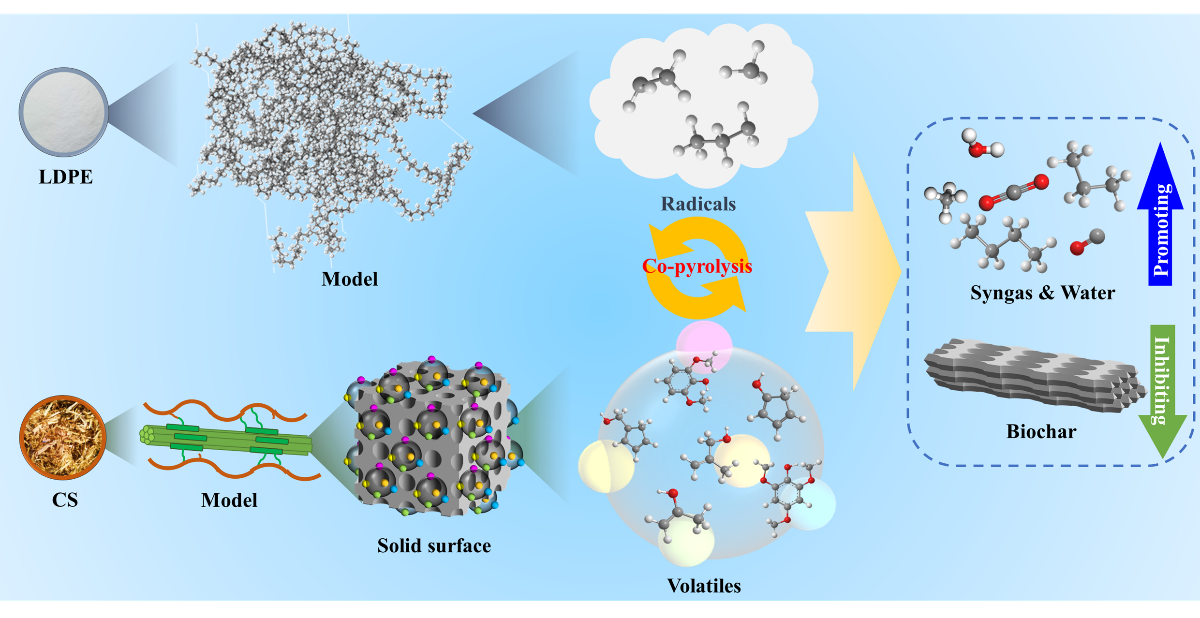Recently, the Clean Conversion and High-value Utilization of Farming Waste Team at the Institute of Environment and Sustainable Development in Agriculture (IEDA), Chinese Academy of Agricultural Sciences (CAAS) revealed the paths of variations in the functional groups on solid matrix during the co-pyrolysis of corn straw (CS) and low-density polyethylene (LDPE). The related findings have been published in the Chemical Engineering Journal .
It is difficult to recycle and utilize CS as it is often mixed with mulch film, causing serious pollution to the environment. Co-pyrolysis can turn them into clean biochar, pyrolysis gas and bio-oil; however, the uncertainty in how the functional groups on solid matrix vary during the co-pyrolysis of CS and LDPE makes it difficult to develop an effective control strategy.
Based on in-situ FTIR spectroscopy, as well as cutting-edge technologies such as thermogravimetric-infrared-mass spectrometry (TG-FTIR-MS) and electron paramagnetic resonance (EPR), the research team analyzed the paths of variations in five typical functional groups (OH, C-O, C=O, C=C, and C-H) on solid matrix during pyrolysis/co-pyrolysis. The results indicated that co-pyrolysis promoted the generation of H2, CH4, CO, CO2, clarified the rules by which LDPE affected the reactions of functional groups on solid matrix, and revealed the biochar formation mechanism during co-pyrolysis, providing theoretical support for controlling and recycling agricultural waste through co-pyrolysis.

Doctoral student Xie Teng with the IEDA, CAAS is the first author of this paper, and Researcher Zhao Lixin is the corresponding author. This research was supported by China Agriculture Research System and the National Key Research and Development Program (2022YFD2002100).
Linkage:https://doi.org/10.1016/j.cej.2024.149166

